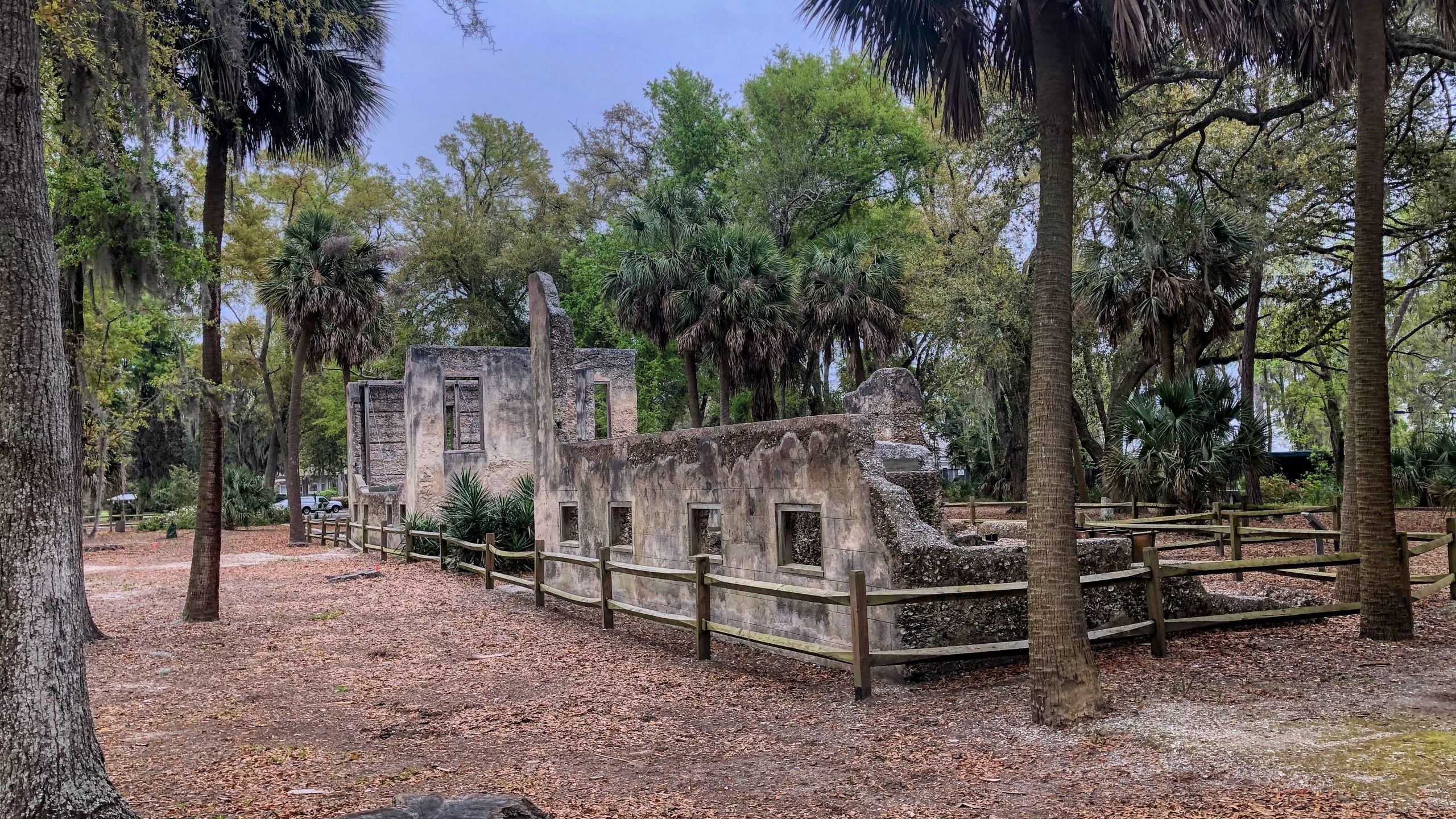Fire – Dangerous Necessity
We are fortunate to have in our Sams Plantation Complex the ruins of several chimneys. Here’s an easy question. How many pre-1820 chimneys can you see on Dataw Island today? The answer is 12! The much tougher question is, how many fireplaces did these chimneys serve? I’ll try to answer both questions in the course of this article.
Fireplaces were a necessity of life, even this far south, for centuries. They housed fires for cooking and baking, provided heat, and served as a family gathering spot. In our area, there were several challenges with a fireplace. Providing heat was only desired seasonally down here, while cooking was a year-round necessity. And any fire ran the risk of unintended consequences, like burning down a house or the better part of an entire town, as happened to Beaufort on January 17th, 1907, “Red Saturday.” (For more, see Professor Rowlands third volume on The History of Beaufort County). We can see how BB Sams solved this problem by separating cooking fireplaces from those used for heating. This week, I concentrate on the chimneys of Datha Point and Datha Inlet.
Datha Point
Datha Point plantation, owned by Lewis Reeve Sams, is on the north side of Dataw along the Morgan River. It had two chimneys, one on each end of the house (Brooker.) We believe the house was similar to the middle (older) house of his brother BB’s house down at Datha Inlet. If true, these chimneys would likely be serving two fireplaces each, one on the first/main level and one on the attic/sleeping level, for a total of four fireplaces. We also know there were slave quarters for his plantation a short distance west of his house. Whether the kitchen was there or elsewhere, we do not know. Little of this plantation remains to be seen, except for the eastern chimney along the marsh edge of our Morgan River #14 fairway. [See the photo in Week 13 Almost Forgotten for a view from the water.]
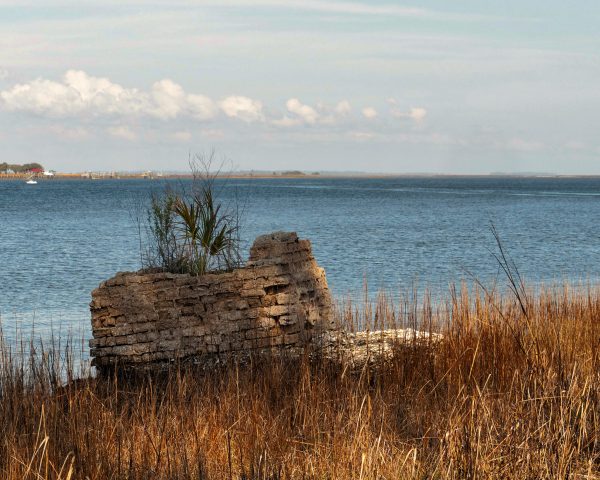
Datha Inlet
Datha Inlet plantation, owned by Berners Barnwell Sams, is in south-central Dataw Island along Jenkins Creek. When you visit the ruins today, you can see the remains of four chimney’s that served the main house. The older, raised middle house had two, one on the east side of the house and another on the west. The east and west wings, which BB Sams built new, had chimneys in the center of each wing. But the tricky part is how many fireplaces did these four chimney’s serve?
It’s tough to tell, but based on the remaining ruins, excavation, artifacts, and comparable construction in the area in the early 19th century, we have an educated guess. We think these four chimneys served as many as ten fireplaces. It appears each wing had two fireplaces on the main floor and one in the attic area. And the raised middle house had possibly three fireplaces, two on one chimney and one on the other. Again, both had main floor fireplaces, but one seems to have had an additional fireplace in the basement and attic. And while the BB Sams plantation house was mainly of tabby construction, it still had wooden floors, roof, and porch. So it’s doubtful if any of these fireplaces were used for cooking, too risky.
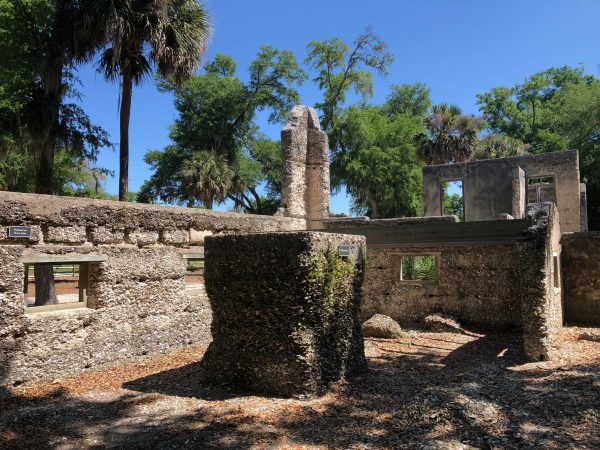
Outbuildings
The outbuildings around the plantation complex include five single-family houses for enslaved. Four had chimneys, and one did not. The original fireplaces associated with these chimneys were likely used for cooking and heating. And I know you’ve heard this on the ruins tour, but we do think the house without a fireplace was a bachelors’ quarters of sorts.
The other prominent structure inside the yard wall is the kitchen, or should I say the kitchen area. First, the freestanding fireplace is indeed part of a BB Sams-era kitchen complex with this huge fireplace and chimney. It was used in the antebellum era to cook all the food for Dr. Sams and his family. The chimney is five feet deep, nine feet wide, and 20 feet tall. When the original excavation was done in this kitchen area in 1983, over 1,600 artifacts were found. And while an analysis of these artifacts confirmed the primary purpose of this area as a kitchen, we also found evidence behind this big kitchen of another two, not directly related, structures. This area behind the BB Sams-era kitchen has some mysteries associated with it because there appears to be a build – modify – reuse – re-modify cycle associated with it.
In the far back corner is a tabby foundation for a 600 square foot structure, with chimney. We’ve concluded, after several more professional excavations, that it is the ruins of an older kitchen dating to well before Willam Sams bought Datha in 1783. Exciting, because it’s the only other structure we’ve found that is related to the original William Sams house (BB Sams middle house.) What else it may have been used for over the years is unknown.
The structure between the older and newer kitchens was thought to be an indigo vat; it is not. It appears to be an area where high quality plaster was mixed for use on the house’s interior walls.
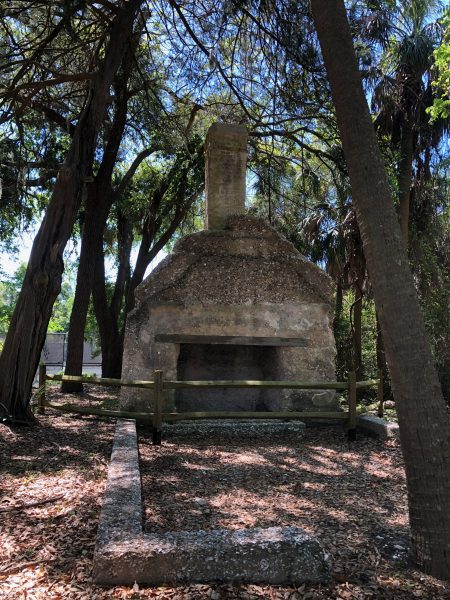
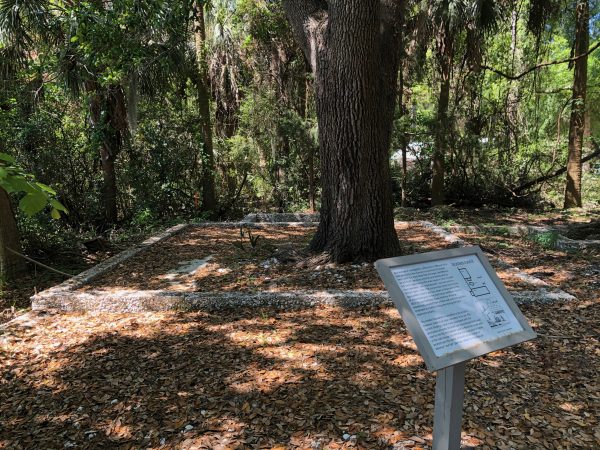
Fate of the BB Sams Plantation House
I would be remiss if I didn’t mention one last theme-related story associated with our historic sites; the fire that destroyed the BB Sams plantation house.
African-American residents apparently remained on the island following the Civil War. There is no artifact evidence anyone lived in the BB Sams house after it was abandoned in 1861. However artifact evidence reveals some or all of the outbuildings around the house remained in use into the later 19th century. The 1880 Federal Census shows about 65 people living on Datha. As an interesting footnote in history, the person who came out to Datha Island in 1880 to take and record the census information was Robert Randolph Sams (1827-1910). His 1849 graduation photograph from the Baltimore College of Dental Surgery is prominently hanging in our History & Learning Center, thanks to Teresa Bridges and Ting Sams Colquhoun.
There is ample evidence a fire destroyed the house. The 1988 excavations revealed burnt timer and ash below a fallen tabby wall section (Lepionka.) You can still see the scorch marks on the ruins walls today.
Around 1876, whether by design or accident the B. B. Sams home burned. It was reported that there was rejoicing on the island of St. Helena.
Colin Brooker interview in Tabby Tattler, Fall 2003
Sources
Brooker, Colin – The Lewis Reeve Sams House, Dataw Island, South Carolina: An Architectural Survey prepared for Dataw Historic Foundation, June 2010.
Lepionka, Larry – Dataw Island Beaufort, South Carolina Cultural Resources Survey, March, 1988. Available here.
Compiled by Grace Morris Cordial, MLS, SL, CA, Historical Resources Coordinator, Beaufort County Library. Latest update: 16 January 2018. https://bdcbcl.wordpress.com/2018/01/16/beaufort-fire-of-1907/
Polson, Mary Ellen – The History of the Fireplace, Jan 23, 2019, Old House Online. https://www.oldhouseonline.com/interiors-and-decor/history-of-the-fireplace
Poplin, Eric C., Brooker, Colin H., et al, The Historical Development of Dataw Island – Architectural and Archaeological Investigations at the Sams Plantation Complex, Section 3. Prepared for Alcoa South Carolina, Inc. August 1993. Available here.
Rowland, Lawrence S. And Wise, Stephen R. – Bridging the Sea Island’s Past and Present, 1893-2006: The History of Beaufort County, South Carolina, Volume 3, October 21, 2015
Tabby Tattlers, Fall 2003, Spring & Fall 2014, Spring 2015, and Spring 2018.
#52 Sams Week 15


